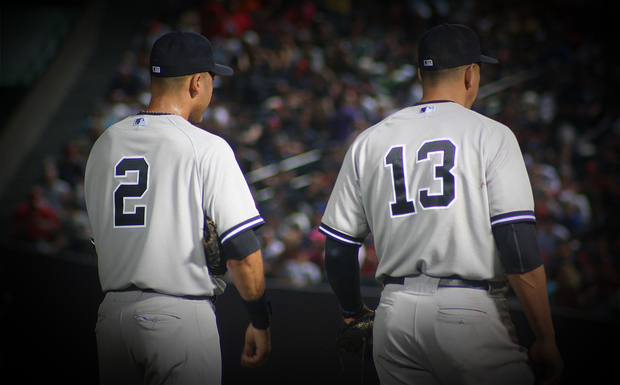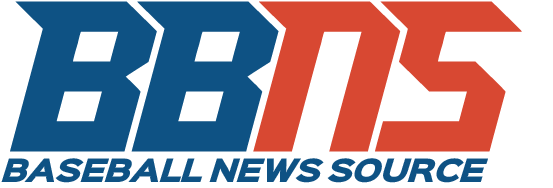
Yankees: There are lots of variables accompanying an October run
We’ve already reviewed the difference between the 2012 and 2009 Yankees’ teams. One installment was swept out of the championship series, embarrassed by its newest nemesis, the Detroit Tigers, for the third time in seven years.The latter won over 100 games and a World Series title, not even needing a deciding game at any level of the postseason to decide the other team’s fate.
So what then, do we make of this most up to date, but still incomplete version of the Yankees?
Major Departures from 2012:
Additions since 2012:
Obviously it’s a little more complicated than this, but suffice it to say we’re assuming more impacts from four of the five players who were on the roster in 2012 at some point, so they are considered additions in 2013.
Alex Rodriguez and Andy Pettitte will factor into this team somehow, as will a potentially healthy Joba Chamberlain and Michael Pineda, but it’s unclear how much of an impact any of them will make, particularly compared to compromised-to-non-existent roles last season.
By the time the Yankees get around to signing a right-handed outfielder and likely one or two more pieces, this team should be equally comparable to its previous installment, except with slightly more age risk and slightly deeper established talent to augment said age risk (Brett Marshall, David Phelps, Adam Warren, Mark Montgomery, David Adams and Ronnier Mustelier, in particular, have more of a chance to assist in 2013 than they did in 2012.)
Compare the 2012 Yankees to the 2012 San Francisco Giants:
2012 Yankees: 95-67
Offense: +136 R, .265/.337, 245HR, 804R, +66SB, 1,176K.
Pitching: 3.86 ERA (4.05 starters), 962 starter IP, 1,318K, 1.27 WHIP, 190 HR against, 74 defensive errors.
Bullpen: 444IP, 3.43 ERA, 1.27 WHIP, 8.9K/9
2012 Giants: 94-68
Offense: +69 R, .269/.337, 103HR, 718R, +79SB, 1,097K.
Pitching: 3.68 ERA, (3.73 starter), 986 starter IP, 1,237K, 1.27 WHIP, 142 HR against, 115 defensive errors.
Bullpen: 452.2IP, 3.56 ERA, 1.34 WHIP, 7.6 K/9.
On the surface the teams are remarkably similar. The stigma the Yankees lack pitching and have a limited defense doesn’t hold up well here.
Though the Giants have significantly more range, particularly in the outfield, they also play in a much larger park, committed 41 more errors and the Yankees will have its best defender on the team, Brett Gardner, likely back in center field where he belongs and in more than a handful of games.
The two teams allow roughly the same amount of base runners defensively and while the Giants edged the Yankees in team ERA, the Yankees edged the Giants in defensive strikeouts.
Offensively, New York used a colossal approach, beating teams into submission and outscoring the opponent by nearly twice that of San Francisco, a notorious close game team.
Of course, a major criticism which doesn’t translate well to the postseason, is the Yankees used 142 home runs more to score just 86 runs extra, a testament to how one dimensional the offense really was compared to another elite team.
Of course, San Francisco, surrendered 39 long balls more than it hit while New York smacked 55 extra in its favor, but that doesn’t mean hitting and relying on home runs is the best approach for a playoff team.
If you went based on stereotype, you would never know one of the worst defensive teams in baseball won the World Series last year.
You also may not have been aware the Yankees had a superior bullpen, or that it was required less than a notoriously dominant Giants’ starting staff might yield.
A large quotient for the 2013 Yankees to be successful in its final season before extravagant roster changes (in 2014), is having some luck.
In this sense, guys like Youkilis, Suzuki and whoever it is manning behind the plate, while statistically inferior, may actually help the team.
Youkilis draws plenty of pitches and does well driving runs in situationally.
Ichiro is an excellent base runner and defender, steals bases and rarely strikes out.
Neither player concentrates on hitting long balls and should help balance the 2013 approach instead of a guy like Russell Martin, who strikes out a lot, hits home runs and struggles to get on base. As for last year’s results:
2012 Yankees:
RISP: .256/.352, 290K
2 outs: .240/.317, 386K
2 outs, RISP: .228/ .330
2012 Giants:
RISP: .259/.336, 315K
2 outs: .240/.308, 365K
2 outs, RISP:.213/.310
Bottom Line
Again, in some cases nearly identical with a slight edge towards the Yankees. New York fielded a superior product compared to the World Champions and yet the same team who swept them, completely stifling the offense along the way was promptly swept and equally embarrassed by the Giants.
A lot may have had to do with Derek Jeter‘s ankle injury, or maybe Detroit simply has the Yankees’ number.
Perhaps San Francisco just steps up under pressure whereas the Yankees were clearly pressing on offense from the first game in October. Maybe it has to do with age to key players or solely on San Francisco’s base stealing and diversified offensive strengths.
There are plenty of variables and lots of luck usually accompanying an October run, but if the Yankees don’t go deep into the playoffs (assuming they escape a loaded AL East) this year, it won’t be because the team wasn’t built for it in the regular season.
![]() Photo by Jenn N. Tonic Flickr
Photo by Jenn N. Tonic Flickr
